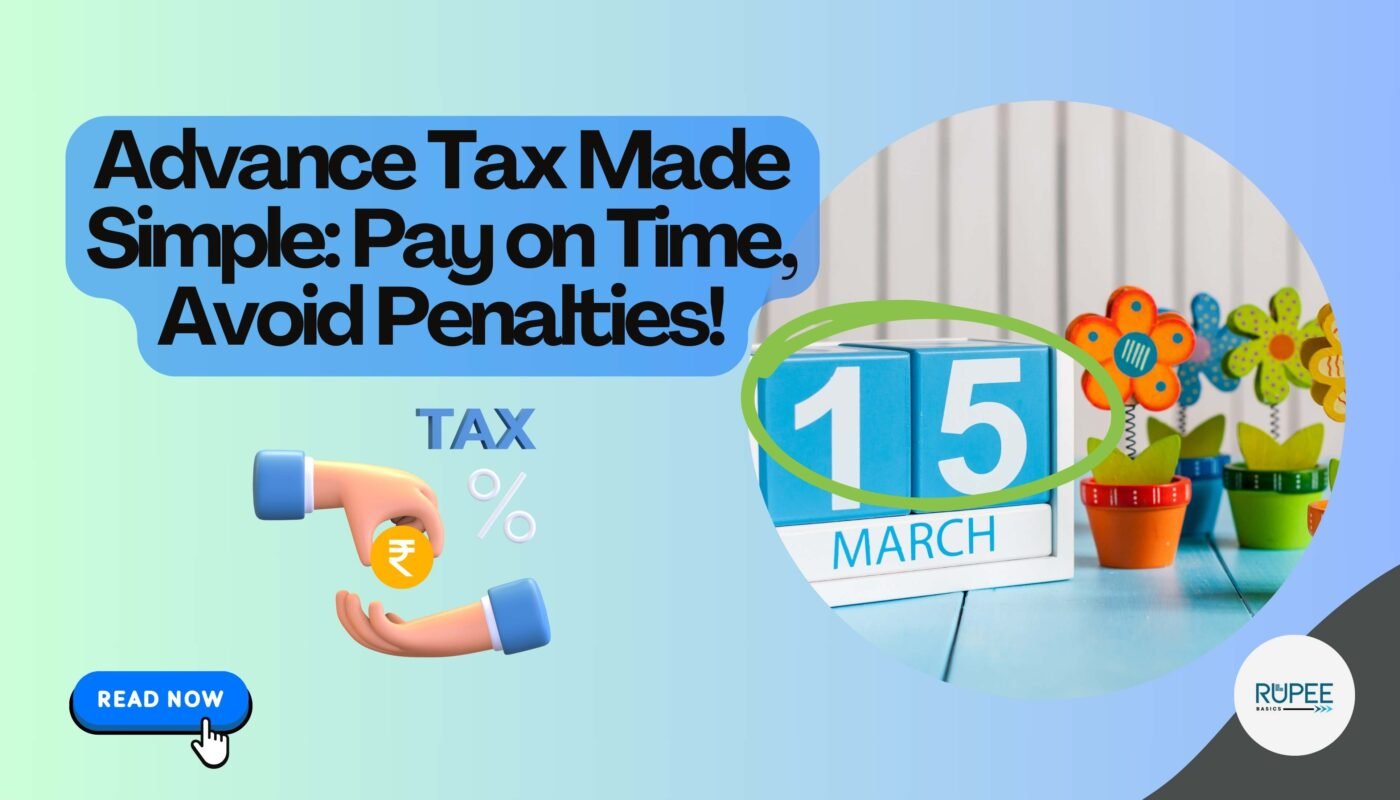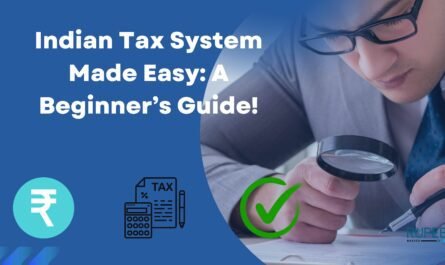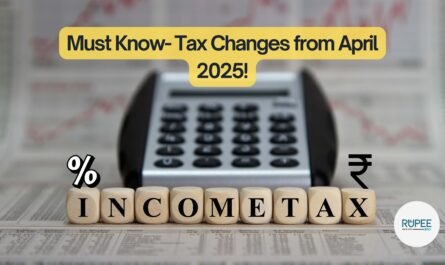Introduction
Taxes are an essential part of financial responsibility, and understanding them can save you from unnecessary penalties. One such tax is advance tax, which often confuses taxpayers. In this blog, we’ll break down advance tax in simple terms – what it is, how to calculate it, when to pay it, and what happens if you miss the deadline. We’ll also compare it with TDS (Tax Deducted at Source) to clear up any confusion. Let’s dive in!
What is Advance Tax?
Advance tax is the income tax you pay in advance during the financial year instead of paying it all at once at the year-end. It applies when your tax liability exceeds ₹10,000 in a financial year. This system ensures that the government receives tax revenue throughout the year, and taxpayers don’t face a huge burden at the last minute.
Advance tax is the tax that individuals and businesses have to pay in installments during the financial year instead of paying the entire amount at the end of the year. It is also known as “pay-as-you-earn” tax.
Who Needs to Pay Advance Tax?
Advance tax is applicable to the following entities:
- Salaried individuals with additional income such as rental income, capital gains, interest income, etc.
- Self-employed professionals such as doctors, lawyers, freelancers, and consultants.
- Business owners whose tax liability exceeds Rs. 10,000 in a financial year.
- Companies irrespective of whether they are private or public.
- Individuals opting for the presumptive taxation scheme under sections 44AD and 44ADA are also required to pay advance tax but in a single installment.
- Anyone whose total tax liability exceeds ₹10,000 in a financial year.
Note: Salaried individuals with no other income sources usually don’t need to pay advance tax as their employer deducts TDS.
How to Calculate Advance Tax?
Calculating advance tax is simple. Follow these steps:
- Estimate your total income for the financial year (salary, business income, capital gains, etc.).
- Deduct eligible expenses and exemptions (e.g., HRA, standard deduction).
- Calculate your tax liability using the applicable income tax slabs.
- Subtract TDS (if any) from your total tax liability.
- The remaining amount is your advance tax liability, which you pay in installments.
Advance Tax Payment Due Dates
Here’s the schedule for advance tax payments:
| Due Date | Percentage of Tax to be Paid |
|---|---|
| 15th June | 15% |
| 15th September | 45% (cumulative) |
| 15th December | 75% (cumulative) |
| 15th March | 100% (cumulative) |
Example:
Let’s say, you are a freelancer with an estimated annual income of Rs. 15,00,000.
- Estimated deductions: Rs. 1,50,000
- Taxable income: Rs. 13,50,000
- Tax on Rs. 13,50,000 as per slab: Rs. 2,16,000 (as per applicable rates)
- TDS deducted by clients: Rs. 50,000
- Net tax payable: Rs. 1,66,000
- Since it exceeds Rs. 10,000, advance tax is applicable.
What Happens if You Don’t Pay Advance Tax on Time?
Failing to pay advance tax or missing deadlines can lead to penalties:
- Interest under Section 234B: If you don’t pay at least 90% of your total tax liability by 31st March, you’ll be charged 1% interest per month on the unpaid amount.
- Interest under Section 234C: If you miss installment deadlines, you’ll be charged 1% interest per month on the shortfall.
How is Advance Tax Different from TDS?
| Aspect | Advance Tax | TDS |
|---|---|---|
| Who Pays? | Taxpayer | Employer, bank, or payer |
| When is it Paid? | During the financial year in installments | At the time of income payment |
| Applicability | Tax liability > ₹10,000 | Applicable on specific incomes |
| Control | You calculate and pay | Deducted by the payer |
Example to Understand Advance Tax
Let’s say Ravi is a freelancer with an estimated annual income of ₹8,00,000. After deductions, his taxable income is ₹6,50,000. His tax liability is ₹40,000 (as per slab rates). Since his tax liability exceeds ₹10,000, he needs to pay advance tax. Here’s how he’ll pay:
- 15th June: ₹6,000 (15% of ₹40,000)
- 15th September: ₹12,000 (45% of ₹40,000 – ₹6,000 already paid)
- 15th December: ₹12,000 (75% of ₹40,000 – ₹18,000 already paid)
- 15th March: ₹10,000 (100% of ₹40,000 – ₹30,000 already paid)
Conclusion
Advance tax is a way to pay your income tax in installments, ensuring you don’t face a financial burden at the year-end. By understanding its applicability, calculation, and deadlines, you can avoid penalties and stay compliant with tax laws. Remember, timely payment of advance tax is not just a legal obligation but also a smart financial move.
FAQs
- Is advance tax applicable to salaried individuals?
Yes, if their tax liability exceeds ₹10,000 after considering TDS. - Can I revise my advance tax payments?
Yes, you can revise your estimates and adjust payments in subsequent installments. - What if I miss an advance tax installment?
You’ll be charged interest under Section 234C, but you can pay the remaining amount in the next installment. - How do I pay advance tax?
You can pay it online via the Income Tax Department’s website or through authorized banks. - Is advance tax the same as self-assessment tax?
No, self-assessment tax is paid after the financial year ends, while advance tax is paid during the year.
“The secret to getting rich is getting started.” – Mark Cuban




